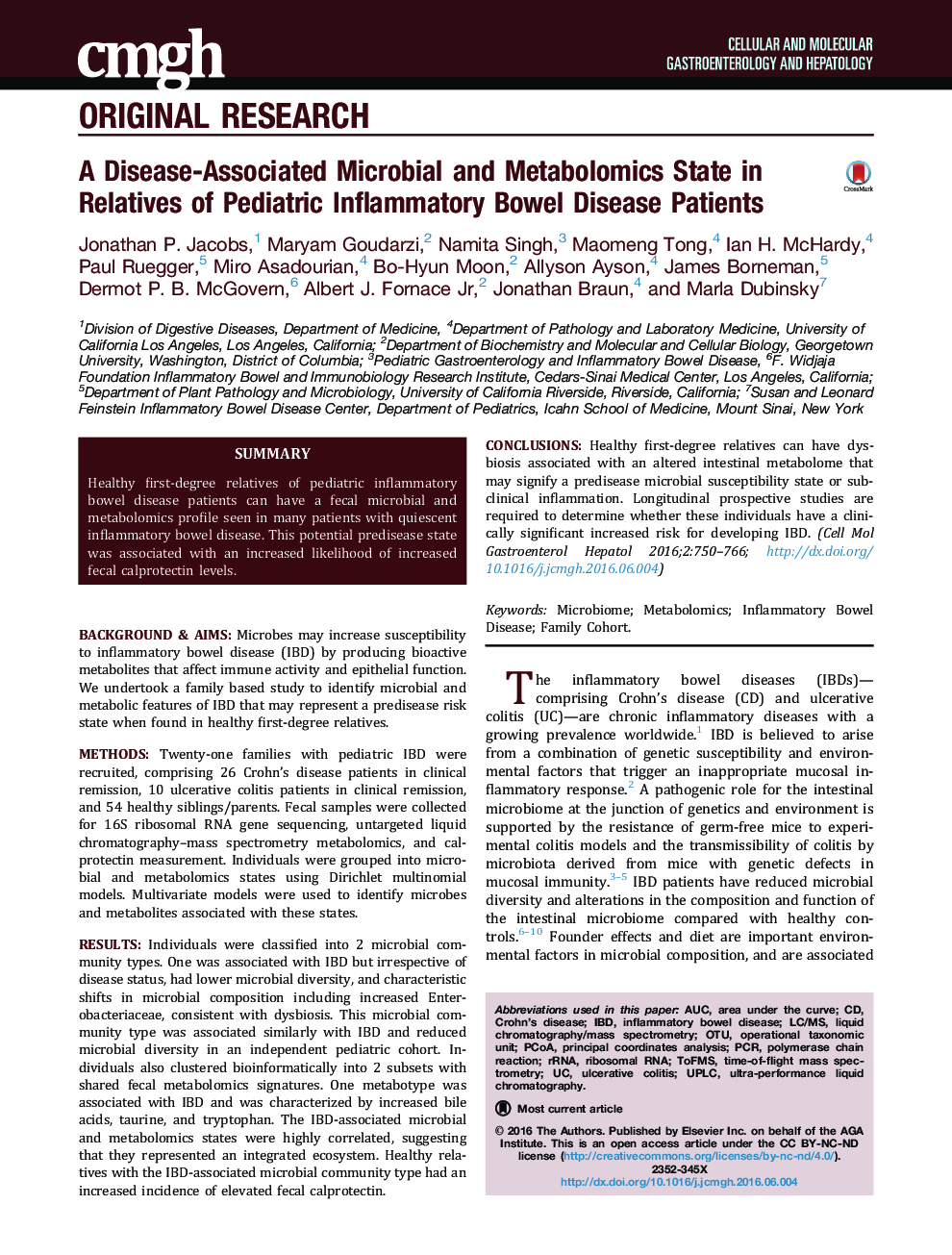| کد مقاله | کد نشریه | سال انتشار | مقاله انگلیسی | نسخه تمام متن |
|---|---|---|---|---|
| 5517269 | 1400958 | 2016 | 17 صفحه PDF | دانلود رایگان |
Background & AimsMicrobes may increase susceptibility to inflammatory bowel disease (IBD) by producing bioactive metabolites that affect immune activity and epithelial function. We undertook a family based study to identify microbial and metabolic features of IBD that may represent a predisease risk state when found in healthy first-degree relatives.MethodsTwenty-one families with pediatric IBD were recruited, comprising 26 Crohn's disease patients in clinical remission, 10 ulcerative colitis patients in clinical remission, and 54 healthy siblings/parents. Fecal samples were collected for 16S ribosomal RNA gene sequencing, untargeted liquid chromatography-mass spectrometry metabolomics, and calprotectin measurement. Individuals were grouped into microbial and metabolomics states using Dirichlet multinomial models. Multivariate models were used to identify microbes and metabolites associated with these states.ResultsIndividuals were classified into 2 microbial community types. One was associated with IBD but irrespective of disease status, had lower microbial diversity, and characteristic shifts in microbial composition including increased Enterobacteriaceae, consistent with dysbiosis. This microbial community type was associated similarly with IBD and reduced microbial diversity in an independent pediatric cohort. Individuals also clustered bioinformatically into 2 subsets with shared fecal metabolomics signatures. One metabotype was associated with IBD and was characterized by increased bile acids, taurine, and tryptophan. The IBD-associated microbial and metabolomics states were highly correlated, suggesting that they represented an integrated ecosystem. Healthy relatives with the IBD-associated microbial community type had an increased incidence of elevated fecal calprotectin.ConclusionsHealthy first-degree relatives can have dysbiosis associated with an altered intestinal metabolome that may signify a predisease microbial susceptibility state or subclinical inflammation. Longitudinal prospective studies are required to determine whether these individuals have a clinically significant increased risk for developing IBD.
Journal: Cellular and Molecular Gastroenterology and Hepatology - Volume 2, Issue 6, November 2016, Pages 750-766
